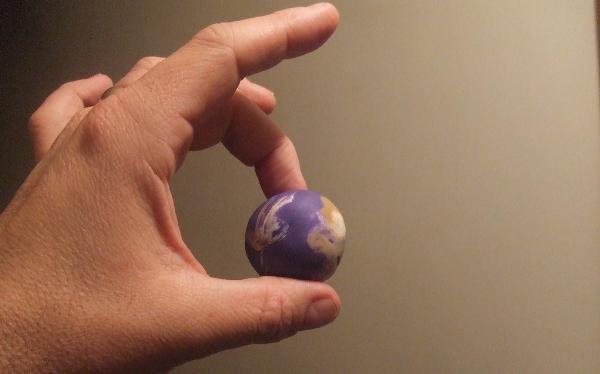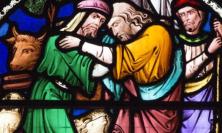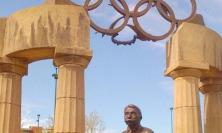Despite the current and historical challenges presented to the Church by scientific progress, there remains great potential for dialogue between religion and science. John Moffatt SJ explores this potential in the final serialisation of the keynote lectures from the 2008 Living Theology summer school at Ushaw College, Durham.
It is only fair to make clear from the beginning that I am not actually an expert on anything. However, I have been lucky enough to talk to some scientists and at least on that basis hope to be able to offer some useful reflections on the state of the dialogue between religion and science. I should like to look at four different areas: the challenge to religious thinking presented by modern science; the current areas of compatibility where dialogue can take place; the wider history of the tensions between the two; and finally a theological perspective centring on the ancient Christian teaching of the Logos, the Word of God.
The challenge of science
One of the biggest imaginative challenges to Christianity in the last five hundred years has been the shift from thinking of the universe as centred around the earth to coping with an effectively infinite universe, in which we are one tiny planet circling one tiny sun in the middle of one tiny galaxy amongst billions. As long as the sun went round the earth, we all knew where we were. There was a clear place for everything and everyone: God, us, heaven and hell, this life and the next. Using a mixture of Platonic and Aristotelian thought, Christianity had harmonised astronomy, science, spirituality, theology and scripture into a complete account of us and our world, now and eternity. But in the last four centuries that has been taken away. In a universe expanding from a point without extent, we can no longer tell a story of ‘where’ all those things belong which faith proclaims, and as it stretches on a vast time-scale towards a big crunch or a cold death, we are hard pushed to make sense of the ‘when’ either.
But since the end of the 19th Century it has probably been Darwinian thinking, in its various forms, that has produced the greatest tension between science and religion. Initially it was a specific challenge to a literal interpretation of the Old Testament. But as the Christian response has become more sophisticated, so has the science supporting Darwinian theory. In our own time the writings of Professor Richard Dawkins give an account of genetic Darwinism on the basis of which he argues that any faith in God is irrational. Many non-believers are grateful to him for articulating for them things which have long troubled them about religion. But I think he has done believers a favour as well. By beginning to give a clear and consistent account of the origins of life and humanity without reference to God, he does indeed raise some tough questions for people of faith, which force us to think much more clearly and profoundly about our own answers than we have needed to for a while. So let us look first at that scientific account of the world which dismisses faith.
Perhaps the two biggest leaps within the history of the universe are the transition from inorganic material to living organisms, and the transition from non-conscious organisms to conscious ones, especially self-conscious reflecting ones like us. Dawkins accounts for the first transition with a biological creation narrative whose key figures are replicating molecules. Such things do indeed exist: molecules which, in an environment with the right mixture of smaller molecules available, cause other molecules like themselves to form. We suppose them to emerge by accident somewhere in the universe where the conditions happen to be right. So long as they are possible(and living organisms are testament to this), improbability is not a problem, given the vastness of the universe. Once molecules start replicating, the evolutionary process begins. As mutations occur between one generation and the next, some mutations reproduce more successfully than others and so there are more molecules like them in the next generation. From this process all of life ultimately evolves.
In the case of consciousness, Dawkins refers to the arguments of Daniel Dennett. In the (wonderfully titled) Consciousness Explained, Dennett uses an artificial intelligence model to account for human mental activity. Our mental activity is the complex assortment of software that has evolved on the hardware of the brain to cope with the exigencies of mammalian and human existence over the last few million years. A by-product of these processes is the sense of self, of a subject to whom these sensations, thoughts, feelings belong. But that self, its experienceand its freedom, are illusions. The processes which produce them, though complex beyond description, are ultimately as mechanical as a PC.
And this leads to the reason for rejecting theism: We do not need it to explain anything about us or about the world. The argument can be stated as follows:
· We can account for the emergence of biological complexity in nature using what we can observe and the laws we already understand.
· It is unreasonable (unscientific) to add another layer of explanation, when this is unnecessary.
· It is even more unreasonable, when the extra explanation itself (God) must be more complex than what it purports to explain.
What is missing in this particular science-based challenge to religion is a narrative that tells us not only how we evolved from the big bang to conscious life-forms, but also how we can live as such beings in such a world. Here we have to turn to the science fiction and fantasy writers to provide the material for an answer. The terrific imaginative effort of Philip Pullman in the ‘His Dark Materials’ trilogy very consciously redresses the balance on an epic scale, pointing the way to a universe without gods but rich in value. The series Dr. Who (on which Richard Dawkins has made, I think, two guest appearances) provides another forum where the writers consistently and intelligently present a vision of a universe wonderful yet explicable in its complexity. Good and evil are real; human choices matter. There is transcendence - but no beyond. There is a conceptual inconsistency here, but the narrative remains compelling.
However, there are many scientists who, whatever their standpoints in matters of faith, do not regard faith in a God as essentially unreasonable, and partly because they are not convinced that all the joins in the material account of the universe are yet sufficiently smoothed over. There may be no sufficient scientific reason for believing in God, but neither is there yet sufficient scientific reason to declare all belief in God misguided. Indeed, in some of those joins remain areas of reality whose puzzling nature permits a legitimate overlap of interests between religion and science.
Room for dialogue
And so we come to the three scientists who were kind enough to give me their time for a conversation.
Professor Susan Greenfield works as a neuroscientist at the Institute of Pharmacology in Oxford. Her principle line of research concerns degenerative disorders of the brain, but this has led her to a specific interest in the phenomenon of consciousness. She does not accept Dennett’s reductive approach to that sense of ‘my perceptions’ or ‘the world as I see it’ which is a distinctive feature of consciousness. She has investigated the physiological correlates of such mental states and suggests a model of conscious awareness as something that takes place when whole-brain activity in response to a stimulus reaches a certain level of intensity. She uses the image of ripples from a stone thrown in water. A sensory stimulus starts a ripple of electro-chemical activity in the brain. The ripples expand (very fast) involving more and more of the brain. And at a certain point in the process, when the activity is sufficiently intense, the ripples sufficiently wide, the owner of the brain becomes consciously aware of the stimulus. But she is clear that identifying the physical conditions under which mental events take place is not the same as giving an account of those events, which remain an irreducibly different sort of thing. Like many, she has been intrigued by the physiological processes that might be involved in religious experience and has explored the physical correlates of the experience of time, timelessness and boredom, the presence and the absence of the sense of self and other. But her sense of the scientific enterprise leads her to be agnostic about ultimate causes of such experiences, rather than to regard the physiological account as being all-sufficient. For her there is no essential contradiction between science and religion.
My second interlocutor was Professor Roger Penrose. He is a mathematical physicist, based in Oxford, who has made major contributions to the mathematics of general relativity. This conversation takes us from the matter-of-fact world of Chemistry and Biology to the Physics on which they depend. And we are led to the refreshing discovery of how weird and counterintuitive ultimate reality seems to be. Take the Schroedinger Equation , for example, one of the ingredients of quantum physics, which allows you to work out where a particle might be at any point. When you do the sums what it seems to mean is that the particle isn’t actually in any one place at any one point. If you visualise someone juggling oranges, just imagine that each one is a particle, like an electron – but each one is the same particle. Each orange - each version of the particle in a different place at the same time – has a number attached to it, and just to make matters worse the number is complex, which means it includes the weird square root of minus one, dreamed up by a 16th Century Italian mathematician. There’s even an orange with a complex number over on the other side of the room. There’s a version of the particle everywhere. However, the weirdness doesn’t end there, because this works only as long as you don’t look. The moment you take a measurement, the particle stops being everywhere and suddenly is in just one place. Our Schroedinger equation was trying to tell us where the particle was probably going to be. But there remains a strange explanatory gap between the equation, which gives us a steadily evolving wave (juggled oranges), and the jump to a particular reading (one orange on the floor), which can only be predicted with probability and never with certainty. (You’ll see the point of this example a little later).
Penrose, though a physicist, is, like Greenfield, intrigued by the question of consciousness. He also does not accept the reductive account of it promoted by Dennett and other Artificial Intelligence enthusiasts. He has developed an argument to suggest that human consciousness is essentially different from anything which could be generated by the sort of rule-governed sequence of arithmetical procedures which are necessary in computing. One difference lies in the very ability of human beings to understand such rules and procedures, that is, to step outside them and comprehend them. The only way a digital-based system could behave like that would be if it were inconsistent, if the rules on which it was based led to contradictions. But consistency is precisely what makes digital computing possible. So (the argument runs) if we want to understand how the human self works, then we should not be looking at computers. Instead, Penrose suggests, if we want to locate the human mind in the physical universe, we should be looking at that part of physical reality where there appears to be a built-in inconsistency. The jump that we have just looked at between the particle as a predictable steady wave and the unpredictable measurement of the particle in a specific place seems to provide just such an inconsistency. The puzzle of quantum theory and the puzzle of human consciousness come together. Penrose suggests that physics will need to be expanded, quantum theory revised, but when this is done, there will be a richer account of the universe in which the mind finds its proper place.
Penrose is not looking for an explanation of mind beyond nature, but wants to expand our understanding of nature to include mind. Like many, he has not found any particular religious system compelling. Nevertheless, unlike Dawkins, he does not regard the case against all religious belief as established. Again, in this scientific perspective, belief need be neither irrational nor inimical to good science. And in this area there is some very interesting room for dialogue.
Dr. Emma Cohen is an anthropologist who works at the relatively new Institute for Cognitive and Evolutionary Anthropology in Oxford. Her fieldwork has investigated concepts of mind, body and spirit amongst Afro-Brazilians. She is sympathetic to a religious viewpoint, though scientifically agnostic about metaphysical claims. Her area of concern is the formation of concepts, including those to do with beliefs in mind, spirits, gods and ethics, across cultures. It is part of a wider programme to find evidence for how we humans are predisposed (cognitively) to be receptive to different sorts of concept as we mature. It seems as if the old idea that children’s minds are blank slates waiting to be chalked on does not match the evidence. There are some things they are receptive to, some things to which they are resistant. They are receptive to ‘god’ concepts and talk but not to any old metaphysical claim - they would take a lot more persuading, for instance, that there was a giant teapot in the sky. It is also possible to detect the precursors of ethical responses to different situations in very young children. Once the conceptual ‘spaces’ common to all human beings are identified, it is then time to look for a suitable account of how these mental spaces emerged in the course of human evolution.
Cohen is clear about the limit on what can be inferred from this. Giving an account of the evolutionary origins of conceptual space, whether God-related or science-related, can move our understanding forward, but will not necessarily provide answers to questions of the meaning and truth of the concepts that come to fill the space. An evolutionary account of the origin of God-space implies neither the non-existence nor the existence of a God.
It emerges that science is not so incompatible with a reasonable belief in God, and for good scientific reasons. Indeed there are many areas of scientific enquiry where believing people need to be engaged for the sake of the intellectual integrity of their beliefs. At the same time there are some of those areas where specific claims made in a belief tradition will be severely challenged by scientific enquiry. For us Catholics, I would highlight the following: teaching on the nature of humanity and the narrative of the fall; teaching on the nature of the human soul and the afterlife; and teaching on bio-ethics. How believers respond to their side of the dialogue is something still to be worked out.
The history of the debate
But now I want to take a little time to look at the science-religion debate in perspective. I want to take you back to those years of turmoil, when a new prosperity began to bring about a breakdown of the old social order. A generation gap opened up. Traditional values were thrown aside as democracy encouraged the cult of the individual. Religious beliefs were treated as irrelevant, as an understanding of the new physics took hold - and God was written out of history. I am referring, of course, to fifth century Athens. A key figure is Democritus, whose primitive atomic theory of matter has only become influential again in the last three hundred years. Like the other physical philosophers of the time, he attempted to explain the world as simply as possible in terms of the behaviour of elementary matter. In doing so he modelled a process of deconstruction which has modern echoes as diverse as the writings of Marx and ‘The God Delusion’.
A generation later Plato, with his pupil Aristotle, was busy formulating responses to that age of deconstruction. Plato’s life work centres on re-establishing value at the heart of human reality: justice, wisdom, self-control, courage, goodness. Aristotle, more empirically and observationally minded, is less interested in an intellectual spirituality of ethics and ethical reform than in constructing a coherent account of reality – material, physical, biological, social – in which value and the divine have their due place. For both of them ‘mind’ is taken as a primary reality and for Aristotle, purposiveness belongs in any good account of why things happen in nature. It is not always enough to say ‘A hit B so B moved’. Sometimes, especially in biology, the explanation is not complete unless you also say what B was moved for.
Aristotle’s model of the universe and his model of sufficient physical explanation (eventually christianised) dominated philosophical thought for 17 centuries. But there was of course, as always, a minority report. In this case it was provided by Epicurus who built on Democritus’ atomic theory to develop a holistic theory of the human condition. We exist battered by atoms drifting randomly in an infinite and uncaring universe. Our only way to survive is to seek refuge from the stresses of life and to hold on to the small nuggets of delight that come our way. The Roman Poet Lucretius, a contemporary of Caesar, provides the fullest account of his teaching. When we read his powerful denunciation of the evils done in the name of religion (wars, child sacrifice), see his delight in the beauty of a fragile and ultimately meaningless world and hear the advice to ‘seize the moment’, we can recognise voices of our own time, struggling to make a similar sense of what it is to be human.
The tension between religion and science is an ancient one and rests in part on personal experience, but partly also on assumptions about what makes a good explanation. For Aristotle, a biologist, it was clear that a scientific explanation was not sufficient until it had answered all the questions that could legitimately be asked, including ‘what for?’ For others, any explanation that plausibly accounted for the emergence of complexity from simplicity in material terms was sufficient. Richard Dawkins places himself in the latter ancient tradition. But the philosopher Wittgenstein puts elegantly the existential puzzle raised by this choice: when all the questions that science can answer have been asked and answered, the problems of life remain untouched.
‘Logos’
I want to finish by looking at a theological term which has been important in the Jewish and the Christian traditions and which can unite the quest for physical understanding and the search for meaning and value. It is the term ‘Logos’. We Christians speak of the 2nd person of the Trinity as the ‘Word through whom all things were made’. But the word ‘Word’ has a long tradition that draws together the philosophers’ desire to describe the world or to give an account of it, and the experience of the people of Israel, for whom God’s commanding word both calls all things into existence and speaks to them in every moment of their history. The Greek word ‘Logos’ is used by Jews and Christians to hold all this together. But it also carries the sense of ‘intellect’ or ‘reason’, the highest power in the human self, capable of recognising and responding to value and the divine.
The divine Logos can be imaged as the architect or even the blueprint of universe. ‘All things come to be through him and for him’. There is a deep relationship between the world (including ourselves) and the one through whom we come into being, and it is a relationship in which personhood and value are primary realities.
We have to be careful, though, when thinking of the Logos as blueprint, or designer, not to think too small. We are used to design as something sharp-edged, clearly defined. When we human beings design something for mass production our product is, for instance, the Big Mac: the same (including the little bit of gherkin) wherever you go in the world. Yet when we look at the universe we see a galaxy of stars, a forest of trees, a range of mountains, each one recognisably similar but also unique in its development. Here, if we are to speak of design, that design is more like a space of possibility into which a creature can grow and take shape – a continuous interplay of shaping creativity and freedom. This Word of God is not the word of simple definition, but the rich and shaping space of love in which different creatures can find their definition and their pathway, as lightning finds its pathway to the ground.
When we take this Word to heart, we recognise that we are called to cosmic contemplation. More deeply and strangely than we have ever grasped before, the heavens (and the earth) still proclaim the glory of God. The dialogue between religion and science continues through and beyond all tensions and it is sustained by a shared capacity for wonder.
John Moffatt SJ is Catholic Chaplain to the University of Oxford. He is the author of Beyond the Catechism: Intellectual Exercises for Questioning Catholics (Lulu, 2006)
This article was adapted from a lecture given at Living Theology at Ushaw College, Durham in July 2008.
With many thanks to Professor Susan Greenfield, Professor Roger Penrose, Dr. Emma Cohen for generously giving their time.
Baroness Susan Greenfield: Director of the Royal Institution of Great Britain, Fullerian Professor of Physiology, Senior Research Fellow Lincoln College,Honorary Fellow, St. Hilda's College.
Non-specialist writing includes: Journey to the Centres of the Mind Toward a Science of Consciousness (W H Freeman Co, 1995), Private Life of the Brain (Penguin, 2000), Tomorrow’s People: How 21st Century technology is changing the way we think and feel (Penguin, 2003)
Sir Roger Penrose, Ph.D., OM, FRS, Emeritus Rouse Ball Professor of Mathematics at the Mathematical Institute, Oxford, Emeritus Fellow of Wadham College.
Non-specialist writings include: The Emperor’s New Mind (1989), Shadows of the Mind (1994), The Road To Reality: A Complete Guide to the Laws of the Universe (2004)
Dr. Emma Cohen, researcher at the Centre for Anthropology and Mind within the Institute of Cognitive and Evolutionary Anthropology at the University of Oxford.
Writings include: The mind possessed: The cognition of spirit possession in an Afro-Brazilian religious tradition (New York: OUP 2007)
![]() Living Theology
Living Theology![]() Oxford University Catholic Chaplaincy
Oxford University Catholic Chaplaincy![]() Beyond the Catechism: Intellectual Exercises for Questioning Catholics
Beyond the Catechism: Intellectual Exercises for Questioning Catholics






